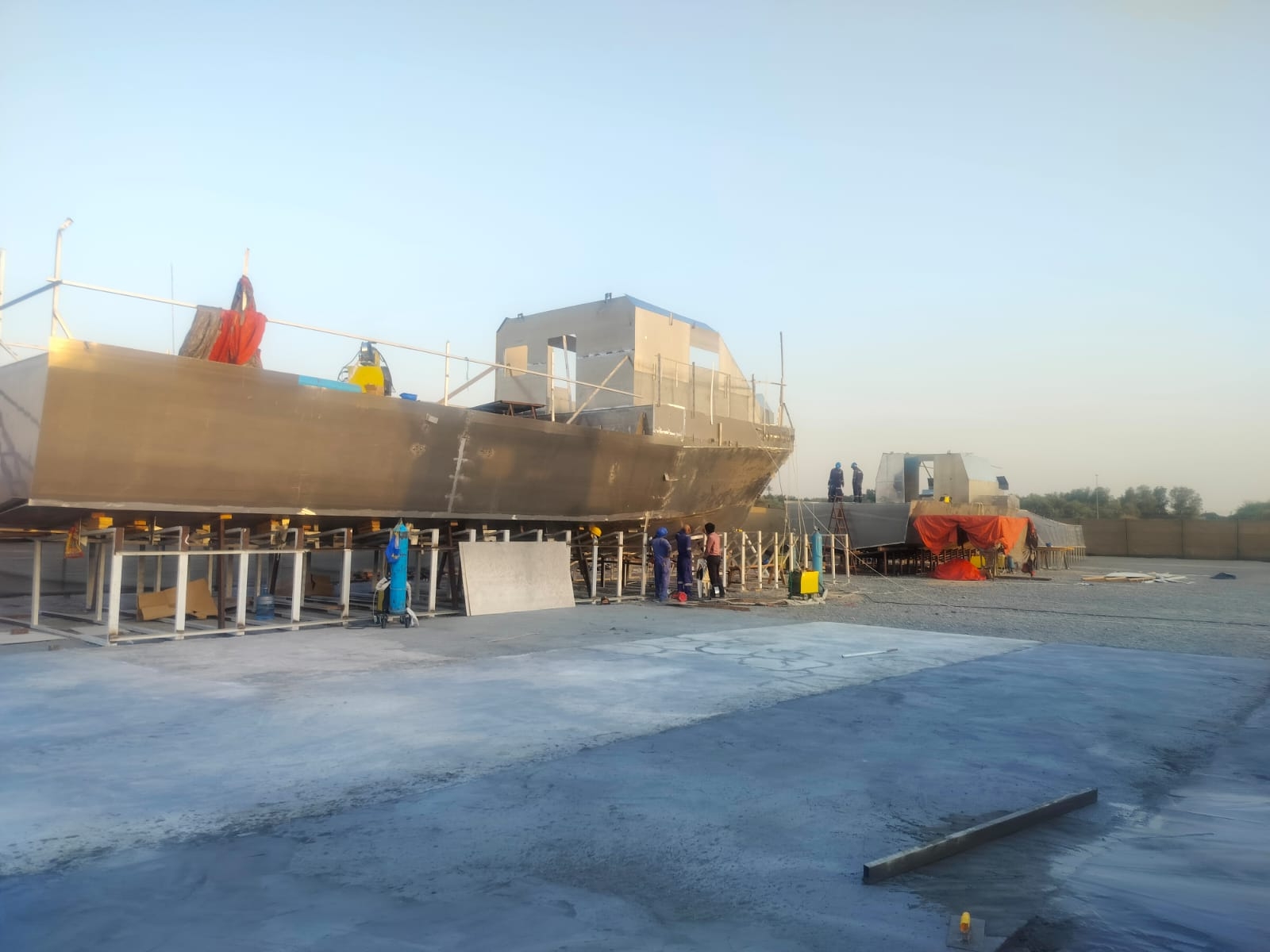Why Barge Building Is Essential for Maritime Infrastructure

When most people think of maritime transport, they picture massive container ships carrying thousands of steel boxes across oceans. Yet, behind the scenes, barges—flat-bottomed vessels usually pulled or pushed by tugboats—quietly carry the bulk of heavy goods through rivers, canals, and coastal waters. These vessels are the unsung heroes of maritime logistics. For modern aluminum barge builders, constructing efficient, durable, and versatile vessels is more than an industry—it’s the foundation of maritime infrastructure itself.
Barges Bring Efficiency on an Enormous Scale
Maritime shipping already transports almost all international commerce by volume, and barges are a key part of that infrastructure. They are tasked with transporting large, bulk items like coal, grain, oil, and chemicals—products that lie at the foundation of contemporary economies.
Due to their configuration, barges are also very fuel-efficient. In comparison to trains and trucks, barges transport much more freight per unit of fuel burned. One barge can carry dozens of trucks on the highway, easing traffic, decreasing freight expense, and reducing emissions. For aluminium barge manufacturers, this efficiency is a motivating factor for demand for new shipbuilding.
Cost Savings Through Scale
One of the largest benefits of barging is its scale. A single barge has the potential to substitute for as many as 70 truckloads of material. For liquid cargo, the efficiency is even more extreme: a single barge can ship the equivalent of more than 100 tanker trucks.
This ability directly translates to cost savings. Fewer trucks on highways result in less wear and tear on road infrastructure, less traffic congestion, and lower maintenance costs. To governments as well as private operators, barge investment is one of the most realistic means of producing long-term cost savings. That's why demand is growing not only domestically but worldwide—for instance, among barge builders in UAE, who are increasing fleets in order to serve both inland waterways and coastal trade.
A Global Market on the Rise
The barge shipping industry is on a solid growth trend. The business is already worth hundreds of billions of dollars, and projections indicate robust growth well into the following decade.
This growth is driven by soaring demand for bulk freight, growing road haulage costs, and government policies promoting inland waterway development. As international trade volume continues to grow, demand for all forms of barges—ranging from dry cargo barges to specialized tank barges—will only gain speed. This offers solid prospects for any barge building company capable of innovating and providing effective solutions.
Diversity of Cargo, Diversity of Barges
Barge building is not a universal-fits-all business. Various cargoes need varying designs:
- Dry cargo barges haul coal, ores, grain, and building materials.
- Tank barges transport petroleum, chemicals, and liquid fertilizers.
- Covered barges shield sensitive commodities like grain or packaged products.
- Open barges haul oversized equipment and heavy machinery.
This diversity keeps barge building dynamic and responsive, always adapting to changing world trade requirements.
Environmental Benefits
Sustainability is no longer a choice—it's a requirement. Barges provide a cleaner alternative than freight by road or rail. They use less fuel and produce less carbon dioxide per ton of goods transported.
Contemporary barges are now being designed with hybrid engines, clean fuels, and innovative ballast systems to reduce emissions further. Ports, dredging operations, and inland waterway improvements are being funded by governments globally to underpin these low-emission means of transport. This means that building barges is both a business and an environmental imperative.
Infrastructure Backbone
Aside from cost and sustainability, barges offer resilience. Roads and railroads can easily get congested or deteriorate under heavy usage. Waterways, however, present stability and capacity.
Wherever ports experience bottlenecks in the region, barges keep goods flowing inland without interruption. In other nations, investment in larger barges to handle hundreds of metric tonnes doubled or tripled yearly handling capacity. Without this underlying backbone of infrastructure, many supply chains would not be able to operate effectively.
Why Barge Building Is Important for VU Marine
For VU Marine, barge construction is not just shipbuilding. It's a chance to enhance national and international logistics networks, drive sustainability, and help ensure long-term infrastructure resiliency.
The future of maritime infrastructure rests on solutions that are efficient, adaptable, and sustainable. Barges possess all of these virtues. Through ongoing innovation in design and construction, VU Marine can contribute to the backbone of inland and coastal freight networks.
Each new ship constructed enables more robust supply chains, lowers dependence on congested roads, and makes the company a leader in green maritime expansion.
Conclusion
Barges might not steal the scene like container ships, but their role is undeniable. They transport huge volumes of goods cheaply, minimize costs, decongest roads and railways, and offer a green solution for future movement.
Barge construction is not only vital—it is imperative. As international commerce grows and the demand for more sustainable logistics becomes more pressing, companies such as VU Marine stand poised to take the lead. By investing in barge design and fabrication, they can assist in ensuring that marine infrastructure is robust, resilient, and prepared to meet the challenges of the future.
- Questions and Answers
- Opinion
- Motivational and Inspiring Story
- Technology
- Live and Let live
- Focus
- Geopolitics
- Military-Arms/Equipment
- Sicurezza
- Economy
- Beasts of Nations
- Machine Tools-The “Mother Industry”
- Art
- Causes
- Crafts
- Dance
- Drinks
- Film/Movie
- Fitness
- Food
- Giochi
- Gardening
- Health
- Home
- Literature
- Music
- Networking
- Altre informazioni
- Party
- Religion
- Shopping
- Sports
- Theater
- Health and Wellness
- News
- Culture

